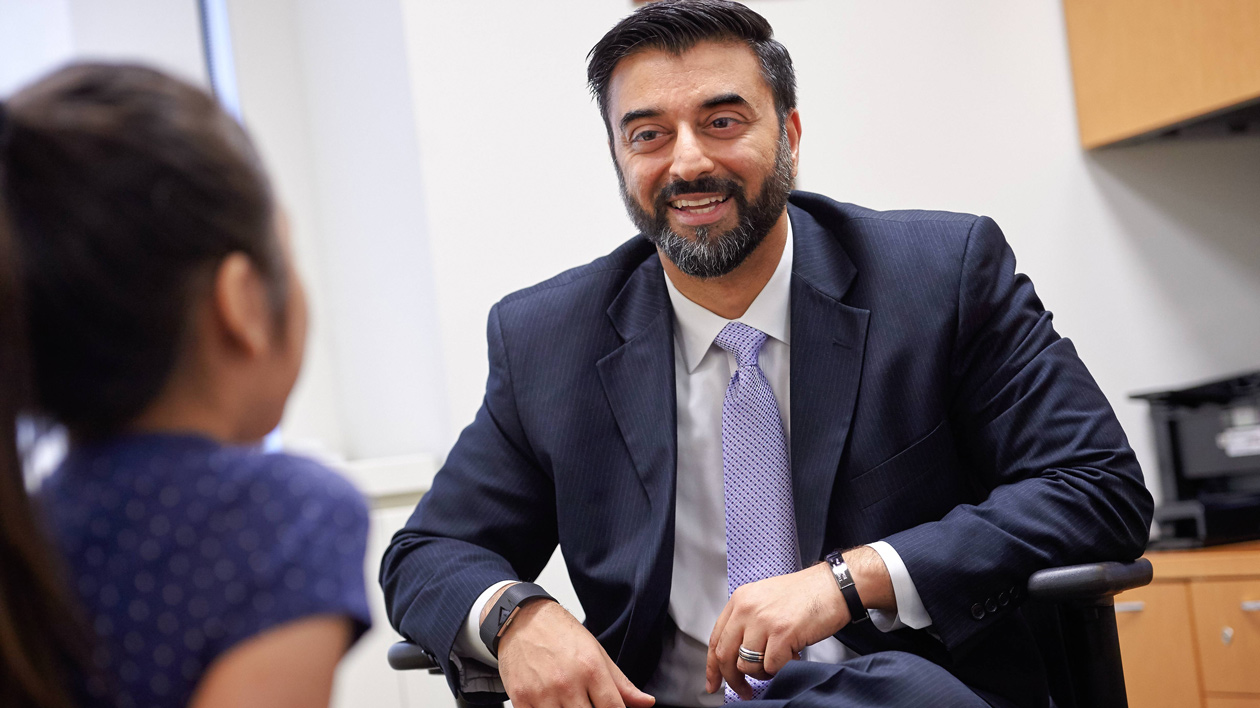Main content
We use cookies and similar tools to give you the best website experience. By using our site, you accept our Websites Privacy Policy.
Cognitive behavioral therapy is often the first treatment recommended by specialists at the Child Study Center, part of Hassenfeld Children’s Hospital at NYU Langone, for children and adolescents with obsessive–compulsive disorder, or OCD. This type of therapy aims to change the child’s beliefs or behaviors, helping to ease symptoms.
Cognitive behavioral therapy has two components. The cognitive part helps a child change how he or she views a situation, and the behavioral part helps him or her learn how to react differently. The goal is to teach children a variety of coping skills to help them manage difficult situations.

During therapy sessions, your child works with a specially trained therapist at the Child Study Center to learn how his or her thoughts, feelings, and behaviors influence each other. To change unwanted feelings or problematic behaviors, the therapist teaches your child how to respond differently to certain situations. Your child can use the techniques learned during therapy to reduce the effects of OCD in his or her life.
Cognitive behavioral therapy is a short-term treatment approach, typically offered once a week for about 12 to 20 weeks. Therapy for children with more persistent symptoms may last longer.
NYU Langone offers intensive cognitive behavioral therapy through the Child Study Center’s Anxiety and Obsessive–Compulsive Disorder Treatment Program. Children who may benefit include those experiencing limited response to weekly therapy, school avoidance or refusal, difficulty engaging in daily activities, or high levels of distress at school or in the home due to anxiety. The program may also help children who need quick symptom improvement or lack access to treatment in their area.
Exposure and response prevention is a type of cognitive behavioral therapy effective for treating children and adolescents with obsessive–compulsive disorder. It teaches your child to recognize his or her obsessive thoughts and avoid the associated rituals.
During the “exposure” part of this therapy, your child slowly and gradually confronts the triggers and thoughts, images, objects, and situations that make him or her anxious. In the “response prevention” part of therapy, your child learns to avoid engaging in a compulsive behavior after coming into contact with an anxiety trigger.
Over time, children and adolescents learn that the less attention they pay to obsessive thoughts, the less likely these thoughts are to affect them. Moreover, children learn that despite experiencing some distress when confronting triggers and obsessions, the “bad things” they worry about don’t happen.
Exposure and response prevention can be conducted one-on-one in weekly sessions, as well as in an intensive group setting with other children or adolescents who are coping with OCD. Some children feel embarrassed by their symptoms, but the group format enables children to recognize that they’re not alone in managing OCD.
We can help you find a Hassenfeld Children’s Hospital doctor.
Call 646-929-7970
or
browse our specialists.